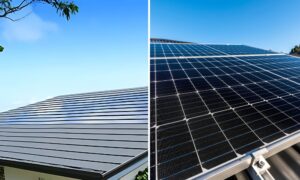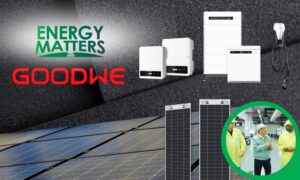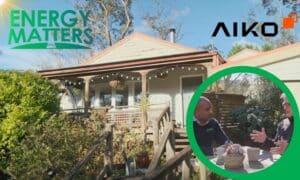Photovoltaic is referred to as PV. Solar PV or Photovoltaic systems are constructed as investments that, once paid for, will provide free electricity during the daytime for its owner, resulting in cost savings in energy bills. Solar photovoltaic systems convert sunlight into electricity without greenhouse gas emissions. Solar PV systems have proven crucial in Australia’s move to a clean energy future.
PV systems serve as long-term investments, offering owners the benefit of free daytime electricity once the initial cost is covered, leading to substantial savings on energy bills. Not only do these systems harness sunlight to generate electricity, but they also contribute significantly to a sustainable, low-emission energy landscape. Exploring options can provide valuable insights into incorporating PV technology seamlessly into your home or business. Get your FREE solar quotes now.
What does Photovoltaic mean and how do solar PV cells, panels and inverters work?
Photo = “light” and photons = energy particles coming from sunlight; voltaic = producing a voltage or volts. Abbreviation = PV
The phrases “photo” and “voltaic” are derived from the Greek meanings of light and voltage. Primarily it means electricity produced from the sun’s energy under the term “photovoltaic” (PV).
Electricity is the movement of the electron. When the sunlight shines on solar cells, it causes electrons to release from their place, leaving a hole in which another electron can fall and interact with it. This occurrence is the Photovoltaic Effect or solar PV.

Solar cells or photovoltaic cells produce a voltage when radiant energy strikes the boundary between two different substances. Solar cells are used in the photovoltaic effect, turning solar energy into direct current (DC) electricity and converted to alternating current (AC) that can power households, businesses or farms. Unique materials, usually silicon crystals, are required to construct solar cells, in which light absorption releases electrons.
When the solar cells are not producing power, for example, at night, power comes from the mains power grid as usual.
The energy retailer charges the standard rate for the power used.
Households in all states are paid by their electricity retailer for excess solar power generated and fed back into the grid. The amount, per kilowatt hour, that you feed back into the grid is known as a feed in tariff. The value varies from state to state. Generous government solar rebates and financial incentives mean you can save thousands on a grid connect system.
A solar panel, also known as a PV panel, is a group of photovoltaic cells enclosed for safety and to allow the voltage generated by each solar cell to be combined. Heavy-duty wires collect the electricity from the solar PV panels and send it into a solar inverter. Check this page for a few tips for choosing the best solar panels. Learn more about home solar panel sizing here.
The solar panels and inverter are the two primary components of a solar PV system.

The solar inverter converts the DC electricity produced by the solar panels into 240V AC electricity, which can then be used by the property/household, exported to the grid, or stored in a solar battery storage system.
The major benefit of a more extensive solar PV system is that it will be simple to add a solar battery, utilise your solar inverter’s capability to its fullest extent, and generate more power during the day so that you won’t be as dependent on grid electricity.
You can start making the most of your solar PV system by installing a solar battery, like the Tesla Powerwall 2.
Energy Matters’ Solar and Battery Storage Calculator can provide a quick insight into whether a solar battery is right for you. Simple to use, and the results are instant!

Types of solar PV systems
Solar PV systems can be:
- grid connected, on grid or grid tied – systems connected to the grid and roof-mounted solar power system with no batteries. Check our page, for frequently asked questions.
- off grid, stand alone systems, Remote Area Power Supply (RAPS) – not connected to the grid
- hybrid – grid tied with solar battery backup.
Solar Power vs Solar Energy
Power and Energy are two different functions. Most people interchange these two important terms in the industry.
Electrons in a wire generate electrical current, and the speed at which they move indicates the current’s power. So Power refers to the speed at which electricity is generated or used. The basic units of Power are joules per second and measured in kilowatts (kW). A solar system’s peak kilowatt output determines its size.
Watts = Joules per second = Rate of energy useAn energy unit is a kilowatt hour (kWh), not power.
Energy is the amount of electricity stored, generated, or used. For instance, today my solar PV system generated 16 kilowatt hours of electricity, my battery stores 13 kWh of energy, and my heater uses 4 kilowatt hours of energy.
Kilowatts (kW) in solar PV systems
Kilowatts (kW) are used to rate solar PV systems. 5kW solar PV system or 5 kilowatts is 5,000 watts of Direct Current (DC) power. While the average residential home has previously had a 5kW solar PV system installed, many households are now opting for larger systems. This is partly due to the ever-increasing energy needs of Australians and how many choose to maximise their systems to ensure that they see their electricity bills as close to $0 as possible!
With the increasing uptake of Electric Vehicles, larger solar PV systems are beneficial to see electricity used in the vehicle. In addition, many are opting to install a solar battery – so greater electricity generated ensures you have enough energy to power your home through the night.
For these reasons, we always recommend sizing up!
Benefits of a solar PV system
- Reduces Electricity Bills – Significantly reduce electric bills thanks to generous federal financial incentives and solar rebates, feed in tariffs and subsidies.
- Renewable Energy Source – The Australian continent has the most solar radiation per square metre of any other continent, making it one of the best places to generate solar energy.
- Low Maintenance Costs – Solar energy systems generally don’t need maintenance. Solar panels, also known as PV panels, are made to last more than 25 years.
- Low Carbon Footprint – With no greenhouse gas emissions, you can be assured that your system is helping Australia move to a cleaner future.
Potentially higher home values – Real estate agents now view solar panels as a resource that can earn revenue. That makes sense, too: who wouldn’t want to purchase a home with more energy efficiency than the accepted standard, which can result in monthly savings on energy costs?












































